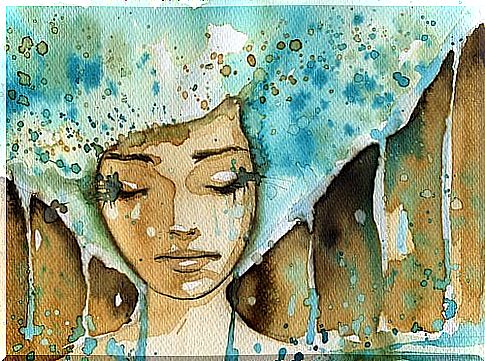Learn To Breathe When Emotions Are Overflowing

Emotions are like compasses that guide us, pushing us to action in most cases (not in all, think for example, that fear can have a crippling effect). But what happens when we let them pick up the remote, with all their energy and without any control? First of all, it is most likely that we are acting with too much intensity, which can influence our self-esteem, especially in the confidence we have in ourselves.
Achieving emotional balance is a process that takes practice and practice. Imagine needing to climb a roller coaster every day, to feel recharged and motivated. While the emotional intensity may appeal to you, chances are you’ll end up completely exhausted from so many emotional ups and downs. You may even end up disoriented and question all your plans.
“Consistently and purposefully take control of your emotions, transforming the experiences of your daily life.”
-Anthony Robbins-
Why do emotions push you to the limit?
Do you need to express emotions intensely to feel that you are alive? Emotional outbursts are often associated with drama or exaggeration. But it doesn’t always happen that way. Maybe you need to feel the emotions and express them with a lot of intensity, it’s your way of showing how you feel and / or that you don’t know how to do otherwise.

Emotional intensity is also linked to people who are very sensitive, with great empathy and the ability to put themselves in other people’s shoes. People who feel affected by everything may feel guilty or be demanding of themselves. Know that it is not easy to deal with these overwhelming and exhausting emotions.
Emotions are like waves they come and go
All emotions are valid and necessary for your development: they all have an adaptive function. There are no good or bad emotions, and neither are there ways to feel better or worse. It is important to allow yourself to feel all the emotions, by finding a way to make them more bearable.
Any emotion, no matter how intense, disappears if you let it go. Emotions are like waves, coming and going, but it’s important not to get carried away by them. Don’t allow them to overwhelm you and try to find the healthiest way to express them.
“Pausing and not acting on the first impulse has become a crucial learning in everyday life.”
-Daniel Goleman-
Breathing is the basis for your emotions to change
Breathing is the pillar that supports all of our emotions. Depending on how we breathe, we will feel the emotion with one intensity or another, and this can even condition the type of emotion that predominates in us. For example, if you are breathing in a restless and rapid manner, it is possible that you are connecting with angst, anxiety, or anger. Conversely, if you can pause your breath and focus on expelling the air, rather than the one entering through your nostrils, you will feel calm entering you.

The anxiety, fear, stress you feel can cause you to have a lack of air or to take quick, shallow breaths. On the other hand, breathing more slowly helps your body stay in a more relaxed state.
Also read:
Learn to breathe when emotions take hold
To learn to breathe when you are overcome by emotions, it is necessary to:
Identify your physical sensations
Observe if you feel a knot in your throat, a lump in your stomach, a tickling sensation in your back …
Observe the basic emotion behind this physical sensation
We have 4 basic emotions that arise behind any bodily sensation. Putting a name on what is happening to you will help you make sense of your experience.
Breathe emotion and express it
Give the emotion space in all its intensity, don’t try to control your emotions. Control leads you to emotional repression. If you can just breathe, you will deal with it in a different way.
If you’re upset, cool down and let go without hurting yourself
Instead of building up and then expressing your anger like a bombshell towards others, you can wait for the emotion to cool down and then look for a more assertive way to express how you are feeling.
If you still feel the need to let go of your anger so that it doesn’t overflow, you can, without hurting yourself, find a way to channel it. For example, a pillow, a towel that you wring out, a plastic bottle that you can squish while thinking about what makes you angry. The more concrete the expression of emotion, the better. It is about releasing the physical energy that the emotion contains.

A practical exercise to work on your breathing and emotions
Breathing out (slowly letting the air out) is associated with relaxation. Conversely, inhalation (taking in air) is more associated with stress and anxiety. On the other hand, know that to learn to breathe quietly, it requires daily practice. We can divide this practice into 5 steps:
- Breathe normally through your nose and with your mouth closed.
- Slowly let the air out through your nose with your mouth closed.
- As you let the air out, mentally repeat the word “calm” or “relaxed” (or whatever word you find relaxing), very slowly.
- Slowly count to four and get some fresh air.
- Practice this exercise several times a day, taking 10 to 15 breaths each time.
The more you practice your breathing, the more you will be able to deal with your emotions, instead of letting them flood and invade you. Emotional balance is directly related to being able to learn to use your emotions to communicate with yourself and with others in a healthy way.
Also read:








